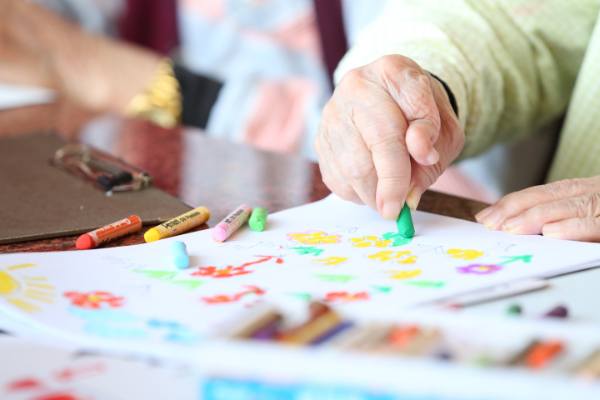The medical term for arthritis is joint inflammation or swelling. It describes more than 100 ailments that have an impact on connective tissues, including those in and around joints. There are three types of Arthritis: osteoarthritis, rheumatoid arthritis, and psoriatic arthritis. Read this article and you can learn more about these three types of Arthritis.
Osteoarthritis
The most typical form of arthritis is osteoarthritis. It usually affects older people and is brought on by overuse of the joints, though it can also affect people with joint injuries or weight issues.
The joints that support weight, such as the knees, hips, feet, and spine, are the ones that are most vulnerable to osteoporosis. Movements become painful because of inflammation brought on by cartilage loss.
At Carolina Arthritis Associations, we treat and manage pain every day. Our treatment plan may include reducing the amount of work the injured joint must perform, physical therapy and exercise routines, as well as any necessary prescription painkillers, dietary changes, and application of heat and ice.
Symptoms Of Osteoarthritis
- Pain or aching
- Stiffness
- Decreased range of motion (or flexibility)
- Swelling
Risk Factors For Oa
- Overuse or joint injury. Injury or overuse can harm a joint and raise the risk of OA in that joint. Examples include knee bending and repetitive stress on a joint.
- Age. As people age, their risk of developing OA rises.
- Gender. Women are more likely than men to develop OA, particularly after age 50.
- Obesity. Joints are put under more strain when carrying extra weight, especially weight-bearing joints like the hips and knees. The likelihood of OA in that joint rises due to this stress. Aside from increasing the risk of OA, obesity may also have metabolic consequences.
- Genetics. People are more likely to develop OA if they have family members who already have the disease. One’s risk of developing knee OA increases if one already has hand OA.
- Race. Some Asian populations have a lower risk of OA.
Treatment Of Osteoarthritis
Because there is no known treatment for OA, doctors typically use a combination of therapies to manage its symptoms. These therapies may include:
- Increasing physical activity
- Physical therapy with muscle strengthening exercises
- Weight loss
- Medications, including over-the-counter pain relievers and prescription drugs
- Supportive devices such as crutches or canes
- Surgery (if other treatment options have not been effective)

Rheumatoid Arthritis
Due to the fact that rheumatoid arthritis is an autoimmune condition, the body’s immune system specifically targets the joints.
Rheumatoid arthritis has unknown origins. Others contend that chemicals in the body cause the immune system to become “confused” after an infection or virus. In any case, this illness can develop slowly or suddenly, resulting in pain, stiffness, and swelling in numerous joints.
It’s possible for the swelling to get so bad that performing routine tasks like opening jars, going for walks, or operating vehicles become challenging or even impossible.
As part of our treatment plans at the Carolina Arthritis Association, we may prescribe a number of drugs to lessen inflammation and stop the degeneration of joints.
With aggressive and early intervention, more is now feasible than ever before because of recent advancements. Make an appointment right away if you suspect that you have this illness.
Symptoms Of Ra
There are periods when RA symptoms worsen, referred to as flares, and periods when they improve, referred to as remissions.
RA symptoms and signs include:
- Pain or aching in more than one joint
- Stiffness in more than one joint
- Tenderness and swelling in more than one joint
- The same symptoms on both sides of the body (such as in both hands or both knees)
- Weight loss
- Fever
- Fatigue or tiredness
- Weakness
Risk Factors For Ra
- Age. RA can develop at any age, but the likelihood rises with advancing years. Adults in their sixties are the most likely to develop RA.
- Sex. Women typically have two to three times as many new cases of RA as men do.
- Genetics/inherited traits. Certain genes increase the risk of developing RA in newborns. These genes, also known as HLA (human leukocyte antigen) class II genotypes, can exacerbate your arthritis. When individuals with these genes are exposed to environmental factors like smoking or being obese, their risk of developing RA may be at its highest.
- Smoking. Numerous studies demonstrate that smoking increases a person’s risk of developing RA and can exacerbate the condition.
- Live births in history. RA may be more likely to affect women who have never given birth.
- Early Life Exposures. Some childhood exposures may make it more likely that an adult will develop RA. For instance, one study discovered that children whose mothers smoked had a doubled risk of developing RA as adults. Adult RA development is more likely to occur in children of lower-income parents.
- Obesity. Obesity can make RA more likely to occur. A person’s risk of developing RA increased with increasing weight, according to studies looking at the impact of obesity.
Treatment Of Ra
Medication(s) and self-management techniques can be used to effectively treat and manage RA. Disease-modifying antirheumatic drugs (DMARDs), also known as biological response modifiers (biologicals), are drugs that can be used as a second-line treatment for RA.
They are used to treat the disease and prevent joint deformity. Self-management techniques that have been shown to lessen pain and disability can be used in conjunction with medications to help people manage their RA and continue engaging in the activities that are meaningful to them.
The use of five easy-to-use and efficient arthritis management techniques can help people with RA reduce pain and enhance joint function.
Psoriatic Arthritis
Both the skin and joints are impacted by psoriatic arthritis. Patchy, raised areas of the skin with burning and itching are a symptom of psoriasis.
Psoriatic arthritis, which can cause swelling in the fingers and toes, will appear in about a third of those who have this skin condition.
Men and women both experience the same degree of pain from this type of arthritis, which typically first manifests in patients between the ages of 30 and 50. Rheumatologists who are familiar with the myriad nuances of this condition are best suited to diagnose psoriatic arthritis.
It is crucial to have a thorough physical exam that pays close attention to your joints, skin, and nails, as well as a thorough review of your medical history.
Once psoriatic arthritis is identified, your rheumatologist can come up with a treatment plan for you.
Symptoms Of Psoriatic Arthritis
- enlarged fingers and toes Your fingers and toes may swell painfully and sausage-like as a result of psoriatic arthritis.
- Foot pain. Psoriatic arthritis can also cause pain where tendons and ligaments join your bones, particularly in the Achilles tendon (Achilles tendinitis) or the plantar fascia (plantar fasciitis) of your foot.
- Lower back pain. Psoriatic arthritis can cause spondylitis in some people. Sacroiliitis, which is the most common symptom of spondylitis, affects the joints in your spine’s vertebrae and the joints connecting your spine to your pelvis.
- Nail changes. A nail’s base may separate from the nail, crumble, or form a small pit.
- Eye inflammation. Uveitis can result in eye pain, redness, and blurred vision. Uveitis can cause blindness if left untreated.
Risk Factors For Psoriatic Arthritis
- Psoriasis. The single biggest danger sign of getting psoriatic arthritis is having psoriasis.
- Family history. Many people who suffer from psoriatic arthritis have a parent or sibling who also has the condition.
- Age. Psoriatic arthritis can affect anyone, but it most commonly affects adults between the ages of 30 and 55.
Treatment Of Psoriatic Arthritis
- halts the spread of the disease.
- inflammation reduction.
- treating skin conditions.
- Relieving pain.
- keeping joints as flexible as possible.



